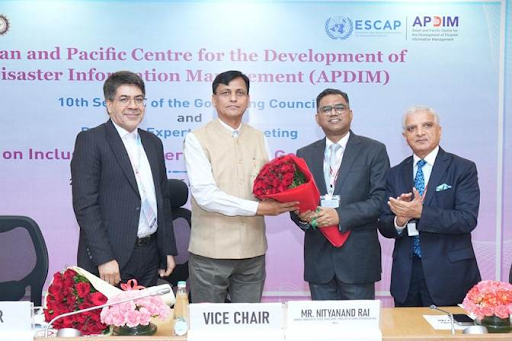




 Disclaimer: Copyright infringement not intended.
Disclaimer: Copyright infringement not intended.
Context
Background and Details
India-Bhutan Relations
Introduction
Geopolitical Context:
Treaty of Friendship:
Economic Cooperation:
Trade Ties
Development Assistance:
Cultural and People-to-People Ties:
Border Management:
Neighborhood First Policy and Bhutan's Importance:
Regional Connectivity
Road Connectivity:
Rail Connectivity (Under Consideration):
Trade and Connectivity:
Immigration Checkpost
SEZ Project
Air Connectivity:
Regional Initiatives (BBIN):
Advancements in India-Bhutan Energy Collaboration
Hydropower Cooperation:
Chukha Hydropower Plant:
Tala Hydropower Project:
Punatsangchhu-I and Punatsangchhu-II:
Mangdechhu Hydropower Project:
Cross-Border Trade and Economic Cooperation:
|
AGREEMENTS AND TREATIES India and Bhutan have signed several agreements and treaties across various sectors to strengthen their bilateral relations. Here are some key agreements between India and Bhutan: Treaty of Friendship (1949): The foundational Treaty of Friendship, Cooperation, and Peace was signed in 1949, establishing the principles of non-interference and close consultation on issues affecting the interests of either country. India-Bhutan Trade and Commerce Agreement (1972): This agreement promotes bilateral trade and economic cooperation, outlining the framework for economic relations between the two countries. Bhutan-India Hydroelectric Projects Agreement (various): Several agreements, such as those for the Chukha, Tala, and Punatsangchhu hydroelectric projects, highlight India's involvement in Bhutan's hydropower sector. Agreement on Trade, Commerce, and Transit (1999): Facilitates smooth cross-border trade and transit, enhancing economic cooperation between India and Bhutan. Cultural Cooperation Agreement (2006): Promotes cultural exchanges, educational cooperation, and people-to-people ties between India and Bhutan. Bhutan-India Friendship Treaty Review Agreement (2007): Reflects the periodic reviews of the Friendship Treaty to ensure its relevance and adaptability to changing geopolitical contexts. Bhutan-India Development Cooperation Agreement (2008): Governs the utilization of funds for development projects and financial assistance provided by India to Bhutan. Bhutan-India Information and Communications Technology Agreement (2008): Promotes cooperation in the field of information technology and communications, fostering technological advancements. Bhutan-India Agreement on Cooperation in the Peaceful Uses of Outer Space (2008): Enhances cooperation in the peaceful uses of outer space, including satellite launches and space research. Bhutan-India Agreement on Trade, Commerce, and Transit (2016): An updated agreement further enhancing trade and transit facilities between the two nations. Bilateral Agreement on Cooperation in the Field of Renewable Energy (2020): Facilitates collaboration in the development and utilization of renewable energy resources, aligning with shared environmental goals. These agreements reflect the comprehensive nature of India-Bhutan relations, covering economic, cultural, technological, and developmental aspects. The collaboration outlined in these agreements underscores the commitment of both nations to building a strong and enduring partnership. It's essential to note that this list may not be exhaustive, and new agreements may be signed in the future as the relationship evolves. |
Challenges in India-Bhutan Relations
Chinese Influence and Border Disputes:
Hydropower Projects and Environmental Concerns:
Economic Dependency and Trade Imbalances:
Connectivity and Infrastructure Challenges:
Socio-Cultural Dynamics:
Diversification of Relations:
Political Changes:
Water Sharing and Resource Management:
Way Forward
Addressing the challenges in India-Bhutan relations requires a forward-looking and cooperative approach.
Diplomatic Dialogue and Conflict Resolution:
Environmental Impact Assessment and Sustainable Development:
Diversification of Economic Partnerships:
Enhanced Connectivity and Infrastructure Development:
Cultural Exchanges and People-to-People Ties:
Water Resource Management:
Regional Cooperation:
Capacity Building and Skill Development:
Political Stability and Institutional Strengthening:
Regular Review of Bilateral Agreements:
Closing Remark
|
PRACTICE QUESTION Q. Analyze the multifaceted dimensions of India-Bhutan relations, considering historical ties, strategic cooperation, and socio-economic partnerships. Assess the significance of the India-Bhutan Friendship Treaty in shaping the bilateral relationship. Discuss the challenges faced and potential areas for future collaboration, emphasizing the role of Bhutan in India's Neighborhood First Policy. |







© 2025 iasgyan. All right reserved